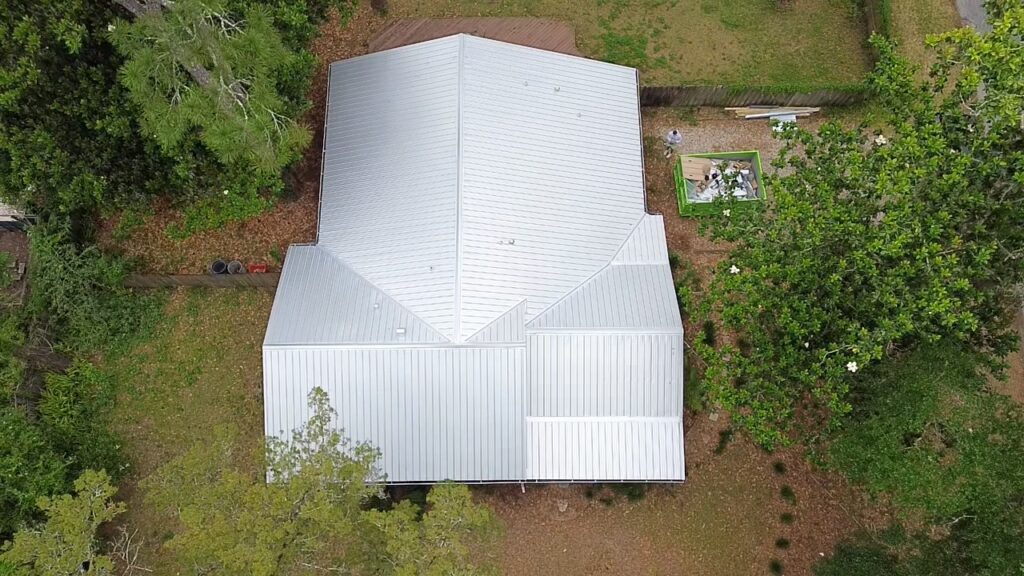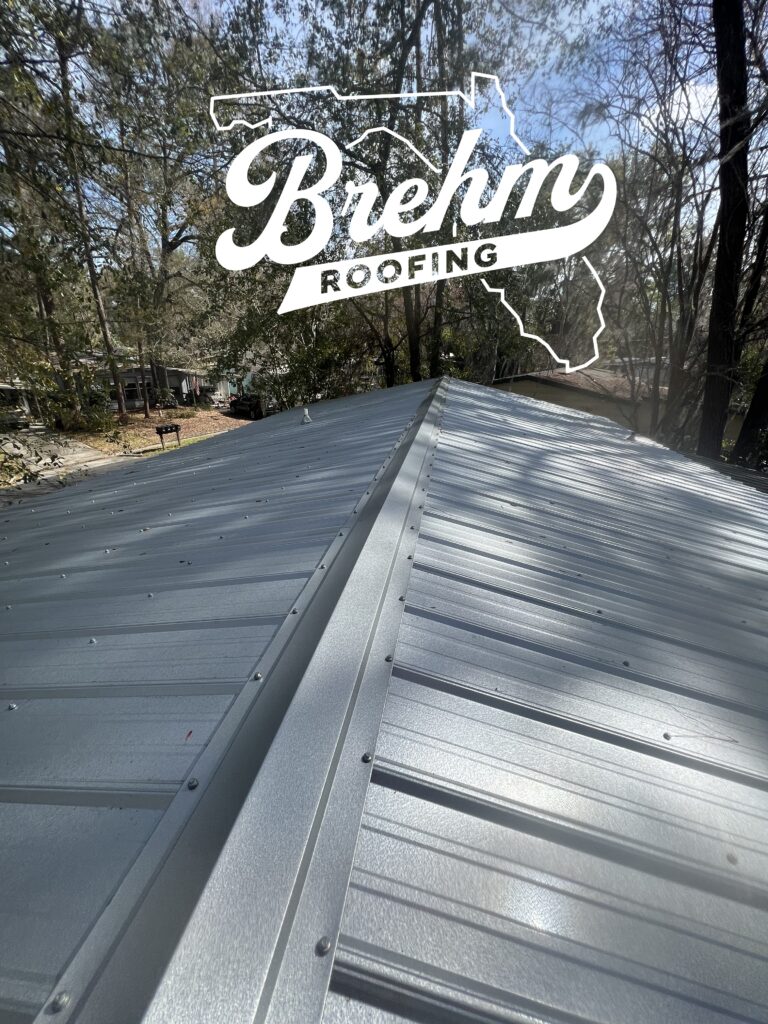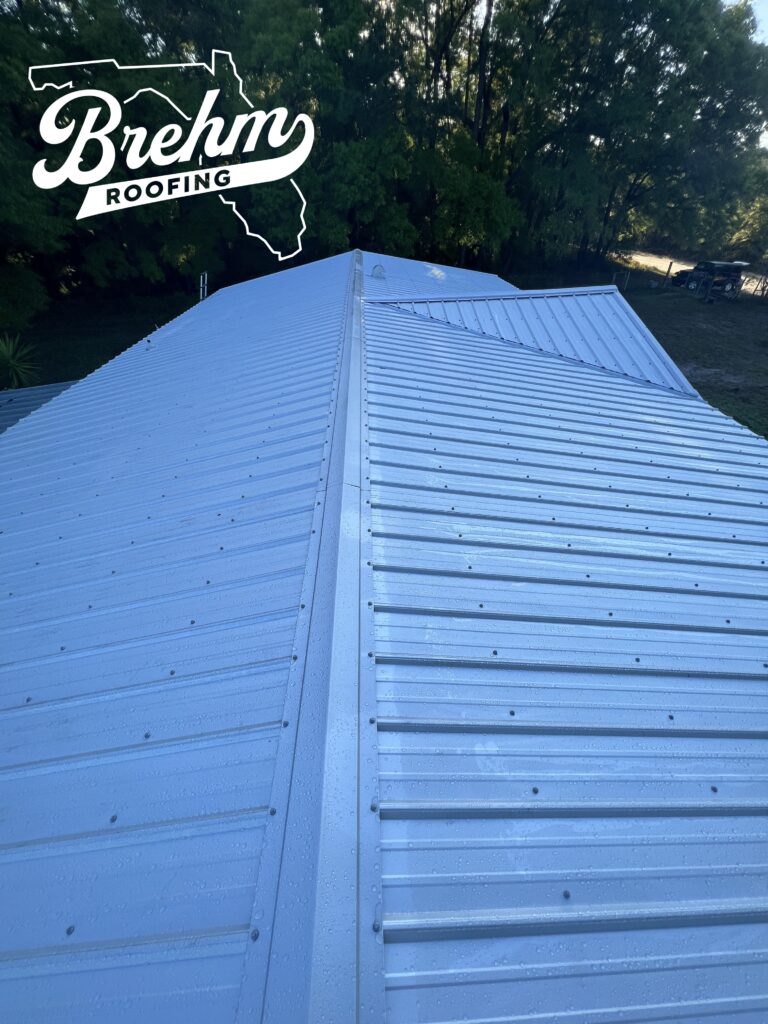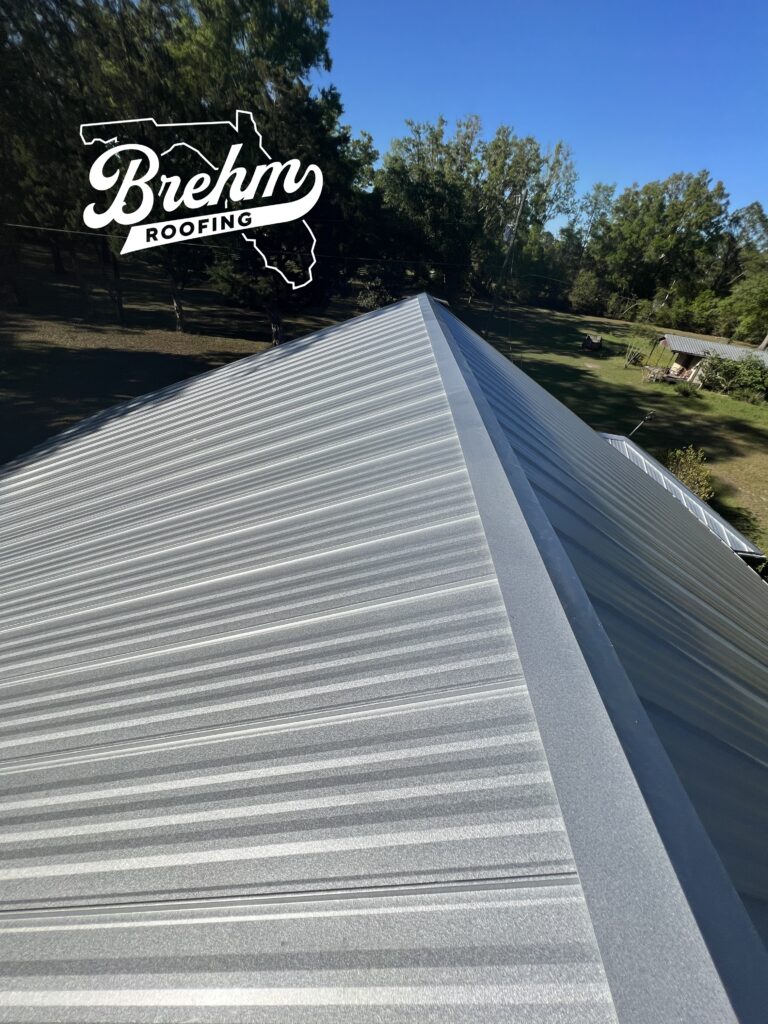The Green Revolution: Understanding the Environmental Impact of Metal Roofing

Introduction to Metal Roofing and Environmental Sustainability
Metal roofing has surged in popularity in recent years, and it’s not just because of its durability and aesthetic appeal. As a professional roofing contractor, I have seen firsthand how metal roofing can play a significant role in reducing the environmental footprint of a building. Understanding the environmental impact of metal roofing involves examining various factors, from the production process and energy efficiency to longevity and recyclability. This blog delves into these aspects, providing a comprehensive overview of why metal roofing stands out as a green building material.

The Production Process: Sustainable Sourcing and Manufacturing
The journey of a metal roof begins long before the panels are installed on a home. The production process is a critical factor in assessing its environmental impact. Unlike many traditional roofing materials, metal roofs often start as recycled materials. Steel and aluminum, the primary metals used in roofing, can be sourced from recycled products, which significantly reduces the demand for virgin raw materials. This recycling process consumes less energy compared to the production of new metals, leading to a lower carbon footprint.
Moreover, modern manufacturing techniques for metal roofing aim to minimize waste and emissions. Advances in technology have enabled manufacturers to produce metal roofing with precision, reducing the amount of scrap metal that ends up in landfills. Additionally, some metal roofing manufacturers are committed to using renewable energy sources in their production facilities, further decreasing their environmental impact.
Energy Efficiency: Reflectivity and Thermal Performance
One of the most compelling reasons to consider metal roofing from an environmental perspective is its energy efficiency. Metal roofs are known for their high reflectivity, which means they can reflect a significant portion of the sun’s rays. This reflective property, often enhanced by special coatings, helps to reduce the amount of heat absorbed by the building. As a result, buildings with metal roofs tend to have lower cooling costs, especially in hot climates.
The energy savings don’t stop there. Metal roofing also offers excellent thermal performance, helping to keep buildings warmer in the winter and cooler in the summer. This reduces the reliance on heating and cooling systems, which in turn lowers energy consumption and greenhouse gas emissions. Homeowners and businesses alike can benefit from these energy savings, contributing to a more sustainable future.
Longevity and Durability: Reducing Waste and Resource Consumption
Another significant environmental advantage of metal roofing is its longevity. Metal roofs can last 50 years or more with proper maintenance, far outlasting traditional roofing materials like asphalt shingles. This extended lifespan means fewer roof replacements over the lifetime of a building, which translates to less waste in landfills and reduced resource consumption.
Durability also plays a crucial role. Metal roofs are resistant to many environmental factors that can damage other types of roofing, such as high winds, hail, and fire. This resilience reduces the need for frequent repairs and replacements, further minimizing the environmental impact associated with roofing materials. By choosing metal roofing, homeowners can contribute to a reduction in the overall demand for roofing materials, conserving natural resources.

Recyclability: Closing the Loop on Metal Roofing
When a metal roof does reach the end of its life, it doesn’t have to end up in a landfill. Metal roofing is fully recyclable, which means it can be repurposed into new products, continuing the cycle of sustainability. This recyclability is a stark contrast to many other roofing materials, which often end up as waste.
The recycling process for metal roofing is straightforward and efficient. When removed, the metal panels can be sent to recycling facilities where they are melted down and reformed into new products. This process not only conserves raw materials but also uses significantly less energy compared to producing new metal from ore. By closing the loop on metal roofing, we can greatly reduce the environmental impact of roofing materials.
The Role of Cool Roofs in Urban Environments
Urban areas often experience higher temperatures than their rural counterparts, a phenomenon known as the urban heat island effect. Metal roofing, particularly when designed as a cool roof, can mitigate this effect. Cool roofs are designed to reflect more sunlight and absorb less heat than standard roofing materials. This helps to lower temperatures in urban environments, reducing the need for air conditioning and lowering energy consumption.
Cool metal roofs can be particularly effective in large cities where the concentration of buildings and paved surfaces contributes to higher temperatures. By installing cool metal roofs, urban areas can experience reduced heat island effects, leading to cooler, more comfortable living conditions and a decrease in overall energy usage.

Environmental Certifications and Green Building Standards
For homeowners and builders looking to make environmentally conscious choices, metal roofing offers numerous opportunities to meet green building standards and earn environmental certifications. Many metal roofing products are eligible for certifications such as ENERGY STAR® and LEED (Leadership in Energy and Environmental Design). These certifications recognize products and building practices that contribute to energy efficiency and environmental sustainability.
Choosing metal roofing can help builders achieve higher LEED ratings, which are increasingly sought after in the construction industry. LEED-certified buildings are designed to be resource-efficient, reduce greenhouse gas emissions, and provide healthier environments. By selecting metal roofing, builders can contribute to these goals and create buildings that are better for the planet.
Reducing Carbon Footprint with Metal Roofing
The carbon footprint of a building is a measure of the total greenhouse gases it produces, both directly and indirectly. Metal roofing can play a significant role in reducing this footprint. As mentioned earlier, the energy efficiency of metal roofs helps lower energy consumption, which directly reduces carbon emissions from heating and cooling systems.
Additionally, the production and recycling processes for metal roofing are less carbon-intensive compared to many other roofing materials. The use of recycled content, energy-efficient manufacturing, and the recyclability of metal roofing all contribute to a lower carbon footprint. By opting for metal roofing, homeowners and businesses can make a substantial impact on their overall carbon emissions.
Innovations in Metal Roofing: Enhancing Sustainability
The metal roofing industry is continuously evolving, with innovations aimed at enhancing sustainability and environmental performance. One such innovation is the development of advanced coatings that improve the reflectivity and durability of metal roofs. These coatings can increase the energy efficiency of metal roofing, providing even greater reductions in energy consumption and greenhouse gas emissions.
Another area of innovation is the integration of solar panels with metal roofing. Metal roofs are ideally suited for solar panel installation due to their durability and ability to support the weight of solar arrays. By combining metal roofing with solar energy, homeowners can further reduce their environmental impact and contribute to renewable energy generation.
Metal Roofing and Water Management
Effective water management is another environmental benefit of metal roofing. Metal roofs are designed to efficiently channel rainwater, reducing the risk of water damage and erosion around the building’s foundation. In areas prone to heavy rainfall, this can be particularly advantageous.
Moreover, metal roofing systems can be integrated with rainwater harvesting systems. Rainwater collected from metal roofs can be used for various purposes, such as irrigation or flushing toilets, reducing the demand for treated municipal water. This not only conserves water resources but also decreases the energy required to treat and distribute water, further lowering the building’s environmental impact.

Aesthetic Versatility and Reduced Environmental Footprint
Metal roofing offers a wide range of aesthetic options, allowing homeowners and builders to choose styles that complement their architectural designs while still being environmentally friendly. The versatility of metal roofing means it can mimic traditional roofing materials such as slate, tile, or wood shakes, providing the desired look without the associated environmental costs.
The reduced weight of metal roofing compared to traditional materials also means less structural support is needed, potentially reducing the amount of building materials required. This can lead to further environmental benefits by lowering the overall resource consumption of the construction project.
Conclusion: Embracing Metal Roofing for a Greener Future
The environmental impact of metal roofing is multifaceted, encompassing production, energy efficiency, durability, recyclability, and innovative advancements. As a professional roofing contractor, I have witnessed the numerous benefits that metal roofing can provide, not only for homeowners and businesses but also for the planet. By choosing metal roofing, we can take significant steps toward reducing our environmental footprint and promoting sustainable building practices.
Whether you are considering a new roof for your home or a commercial building, metal roofing offers an environmentally responsible choice that doesn’t compromise on performance or aesthetics. Embrace the green revolution with metal roofing and contribute to a more sustainable future for generations to come.
